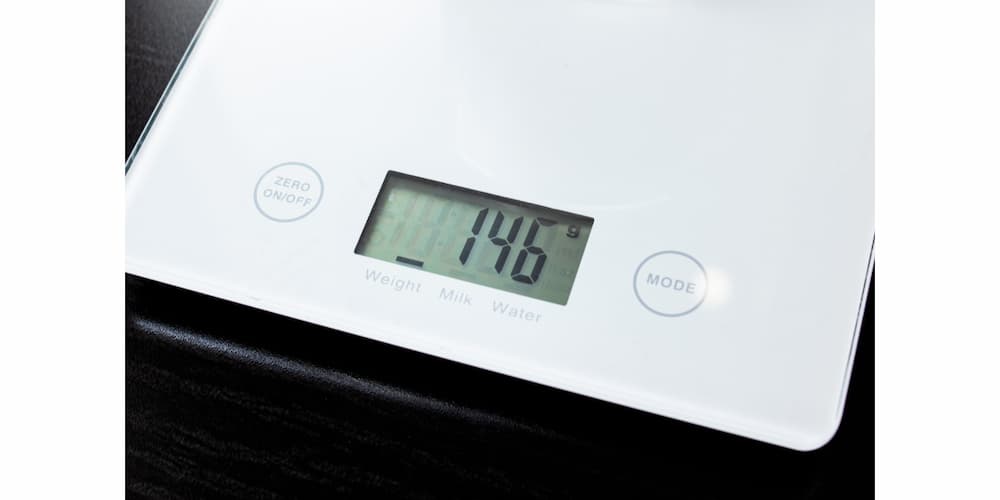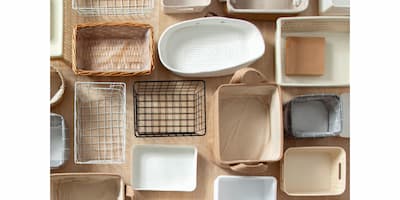
Have you ever wondered how to safeguard your digital scale, ensuring it remains in perfect working condition for the long haul? To make sure it stays in good shape, here is how to store a digital scale the right way.
In this guide, we’ll show you the important steps to store a digital scale correctly. This will help it last longer and keep giving you accurate measurements. Let’s dive into the world of digital scale storage and learn how to keep your scale in great condition.
Choosing the Right Storage Location
Selecting the ideal spot to store a digital scale is the first crucial step in ensuring its longevity and accuracy. Different types of digital scales may require slightly different considerations, so let’s break it down:
For Kitchen Scales:
- Cool and Dry – Kitchen scales should be stored in a cool and dry place. Avoid exposing them to steam or humidity, which can affect the scale’s components over time.
- Accessible – Keep your kitchen scale easily accessible. This encourages regular use and prevents potential damage from being moved around too frequently.
- Away from Heat – Avoid storing it near the stove or oven, as excessive heat can interfere with the scale’s accuracy.
For Bathroom Scales:
- Dry and Stable – Bathroom scales are often exposed to moisture, so make sure the storage area is dry and stable. A bathroom cabinet with good ventilation can be a suitable choice.
- Easy to Reach – Just like kitchen scales, keep your bathroom scale easily accessible, so you’re encouraged to use it regularly.
- Away from Direct Water – Ensure your scale is not in a location where it can be splashed with water. Water and electronic components don’t mix well.
Portable Scales (Travel Scales)
- Protective Case – If you have a travel scale, consider investing in a protective case. This will not only keep it safe during your journeys but also when it’s stored away at home.
- Dry and Cool – Keep your travel scale in a dry and cool place when it’s not in use. Avoid storage in extreme temperatures.
Cleaning and Maintenance
Keeping your digital scale clean and well-maintained is a crucial part of ensuring its accuracy and longevity. Here are some steps to follow:
1. Regular Cleaning
Use a soft, damp cloth to clean the scale’s surface. Avoid abrasive materials or chemicals, as they can damage the scale’s sensors and display.
Gently wipe away any spills or residues immediately to prevent long-term damage.
2. Battery Considerations
For digital scales that use batteries, make it a routine to check and replace the batteries when needed. Weak batteries can lead to inconsistent readings or unexpected power-offs.
Consider using high-quality, long-lasting batteries for reliable performance.
3. Calibration Check
Periodically check the scale’s calibration to ensure it’s measuring accurately. Consult the user manual for your specific scale to learn how to calibrate it correctly.
Calibration might be required more frequently if your scale is moved or exposed to temperature extremes.
4. Delicate Handling
Treat your digital scale with care. Avoid dropping or roughly handling it, as this can harm the sensitive internal components.
5. Preventative Measures
Consider using a dust cover when the scale is not in use. Dust and debris can affect the sensors and accuracy.
When storing your scale, ensure it’s in a location where it won’t be bumped or jostled.
6. Periodic Inspection
Perform regular check-ups to ensure that all components are in good working condition. Look for loose parts or signs of wear and tear.
Using Protective Coverings Before Storage
Protecting your digital scale from dust, debris, and potential damage is vital to maintaining its accuracy and lifespan.
Here are some helpful tips on using protective coverings:
1. Dust Covers:
- Invest in a dust cover specifically designed for your digital scale. These covers are usually made from soft, non-abrasive materials that shield your scale from dust and dirt.
- When your scale is not in use, simply cover it with the dust cover to keep it clean and in optimal working condition.
2. Bubble Wrap or Soft Padding:
- If your scale doesn’t have a custom dust cover, you can use bubble wrap or soft padding as an alternative. Wrap your scale gently in these materials to prevent scratches and dust buildup.
- Be cautious not to apply excessive pressure, as digital scales have sensitive sensors that could be damaged by too much force.
3. Storage Bags:
- Some digital scales come with storage bags when you purchase them. Storing your digital scale in its original packaging is often one of the best ways to ensure its safety. The original packaging is designed to perfectly fit the scale, providing a snug and secure environment.
- If your scale didn’t come with a bag, you can purchase one separately or use a soft cloth bag to keep it safe.
Using protective coverings is a simple yet effective way to safeguard your digital scale when it’s not in use. These measures keep it clean and free from damage, ensuring it remains accurate and reliable for years to come.
Alternative Storage Solutions for Smart Scale

While storing your digital scale in its original packaging is often the ideal choice, there are practical alternative storage solutions, depending on your available space and needs:
- Kitchen Drawer Storage. If you’re short on storage space, a kitchen drawer can be a convenient spot for your kitchen scale. Ensure that the drawer is clean and dry, and use a soft cloth or a piece of cardboard to protect the scale’s surface from potential scratches caused by other kitchen utensils.
- Bathroom Cabinet Storage. For bathroom scales, a bathroom cabinet is a suitable option. It keeps the scale out of sight while ensuring it remains in a dry and stable environment. Make sure there’s good ventilation in the cabinet to prevent moisture buildup.
- Wall-Mounted Storage. If you’re looking to save floor or counter space, consider wall-mounted storage solutions. Wall shelves or hooks can be used to keep your scale off the ground and out of harm’s way but ensure that it’s not exposed to direct sunlight or extreme temperatures.
Remember, the key to alternative storage solutions is to prioritize a stable and safe environment while keeping the scale easily accessible for regular use. To store a digital scale, it’s important to protect from potential harm while keeping it readily available when you need it.
Regularly Inspect the Scale
Performing periodic inspections of your digital scale is a proactive approach to ensuring its continued accuracy and reliability.
Here are some key steps to incorporate into your routine:
1. Check for Loose Parts
Look for any loose or damaged components, such as the scale’s platform or display. Loose parts can affect measurements and should be addressed promptly.
2. Examine the Display
Ensure that the display is free from scratches or dirt that might obstruct the readout. A clean and clear display is essential for accurate readings.
3. Inspect the Power Source
If your digital scale operates on batteries, regularly check the battery compartment for signs of corrosion or damage. This can help prevent unexpected power interruptions.
4. Evaluate the Scale’s Calibration
Periodically calibrate your digital scale to guarantee it’s measuring accurately. Follow the manufacturer’s guidelines on how to calibrate your specific scale. This might be needed more often if your scale has been moved or exposed to significant temperature changes.
5. Look for Signs of Wear and Tear
Examine the scale for any visible signs of wear and tear. Cracks, chipped surfaces, or any other physical damage should be addressed promptly to avoid compromising accuracy.
By making regular inspections part of your digital scale maintenance routine, you can catch and address any issues early, ensuring that your scale continues to provide precise and reliable measurements. Taking a proactive stance toward maintenance ensures that your scale will serve you well for a long time.
Common FAQs on How to store a digital scale
1. Is it necessary to calibrate my digital scale before storage?
Yes, calibrating your digital scale before storage is a good practice. It ensures that your scale starts with a clean slate and is ready to provide accurate measurements when you use it again.
Refer to the manufacturer’s guidelines on how to calibrate your specific scale, and consider calibrating it more frequently if it has been moved or exposed to temperature extremes.
2. Can I store my digital scale in the bathroom if it’s a kitchen scale?
While it’s not ideal, it’s possible to store a kitchen scale in the bathroom if you have no other suitable place. Just make sure the area is dry and provides good ventilation to prevent moisture buildup, which could potentially affect the scale’s accuracy. Additionally, consider using a protective covering to shield it from moisture and splashes.
3. What’s the best way to clean my digital scale?
To clean your digital scale, use a soft, damp cloth to wipe the surface. Avoid abrasive materials or harsh chemicals, as they can damage the scale’s sensors and display. Gently wipe away spills or residues immediately to prevent long-term damage. Always make sure the scale is dry before storing it to avoid moisture-related issues.
4. Can you store a kitchen scale on its side
It’s generally recommended to store a kitchen scale on a flat and stable surface to ensure its accuracy and longevity. Storing it on its side might potentially affect the internal components, especially if it’s bumped or jostled in that position. To maintain its precision, it’s safer to keep the scale on a level surface and protected from any accidental damage.
